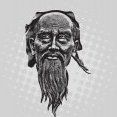
Dr Baraxoow
Nomads-
Content Count
27 -
Joined
-
Last visited
Content Type
Profiles
Forums
Calendar
Everything posted by Dr Baraxoow
-
Apophis;878364 wrote: ^^ Just keep quiet Oba. :confused:
-
Apophis;878354 wrote: Right...it just seemed you were bragging but maybe it's more like you are confessing your sins...hmmm. '' Brag about what?!? Its not like she was Adriana Lima.. c'mon man
-
DoctorKenney;878350 wrote: It's not good to reveal your past sins. Repent, never speak of what you've done, and move on. Whatever happened between you and Idi Amin's neice is no one's business but yours I got you bro.. thanks for the advice.
-
Showqi;878345 wrote: Apo, in la is wareysto ma xumee adiga iyo Baraxoow ma qaraabaa tihiin? (Yacnii xaga diinta). Aboowe, maxaad u jeedaa no?
-
Apophis;878342 wrote: ^^Why did you choose that Avatar? lol Because I've stopped that despicable behavior of mine.. As a youngster I did many things, seen many thing but I have changed now. I just wanted to share a personal experience after I saw that Idi was mentioned..
-
True story.. I wouldn't have touched her if she wasnt related to Idi Amin.:cool:
-
I chewed with a Somali woman and after our grazing session, I gave it to her hard.. she thought I would marry her but when I didn't, she cast a spell over me I guess, because the last 3 years I been broke, every job I get I loose, constant fights with everyone I know. My suggestion is be careful or your lives will be ruined like my mine. On the flip side though, I started smoking geed and truth be told, I feel much better. Who knows.. I might be cured:D
-
Nin-Yaaban;836997 wrote: I don't really care much for politics or any of that stuff, but if you are going to rule over us poor people, atleast have little bit of class and style. Now who would dare go against this self.imposting KELIGIIS TALIYE. Idi Amin was way ahead of his time as far as dictators go..... His niece ayaan Nairobi ku wasay. I met her in a nightclub, that two Somalis that I know took me to, after we chewed and smoked some geed. Unfortunately I beat her raw.. Who knows she might have given birth to a small Faarax that will conquer central Africa one day.
-
They didn't mix with Somalis but they mixed with Rendille who is a Cushitic speaking group. Thats why approximately 50-65% of Massai males have the E1b1b Y-DNA. This haplogroups is pretty much synonymous with Cushitic speaking groups and Somalis have the highest frequency. However they got this haplogroup through the Rendille and this haplogroup is actually the most common among Massai which makes the majority of Massais closer to Cushitic speaking groups genetically then nilotics.
-
They're not mixed with Somalis.. waa sheeko been ah. They're Bantu and we're not. Simple as that!
-
Blackflash;850101 wrote: They're the second closest ethnic group to Somalis after Oromos in terms of genetics. The Rendille are a great example of the contact that Cushitics and Nilotes have had. In fact, the Rendille language is classified as being part of the Macro Somali branch of Cushitic languages. Rendille might have branched off from the same ancient group Oromos and Somalis and other so called Cushitic speaking groups branched off from.. the only differences being that they been influenced and intermarried with neighboring nilotic groups. Oromos intermarry with nilotics aswell like the Turkana but Somalis don't. To be honest, I don't think Somalis have anything to do with oromos or Rendilles or other Cushitic speaking groups. We're unique...
-
Ancient pyramidical structures, tombs, ruined cities and stone walls such as the Wargaade Wall found in Somalia are evidence of an ancient sophisticated civilization that once thrived in the Somali peninsula. The findings of archaeological excavations and research in Somalia show that this ancient civilization had had an ancient writing system that remains undeciphered and enjoyed a lucrative trading relationship with Ancient Egypt and Mycenaean Greece since at least the second millennium BC, which supports the view of Somalia being the ancient Kingdom of Punt. The Puntites "traded not only in their own produce of incense, ebony and short-horned cattle, but also in goods from other neighbouring regions, including gold, ivory and animal skins." According to the temple reliefs at Deir el-Bahari, the Land of Punt was ruled at that time by King Parahu and Queen Ati. Herodotus spoke of the Macrobians, an ancient people and kingdom postulated to have been located on the Somali peninsula during the first millennium BC. They are mentioned as being a nation of people that had mastered longevity with the average Macrobian living till the age of 120. They were said to be the "Tallest and Handsomest of all men". The Persian Emperor Cambyses II upon conquering Ancient Egypt sent ambassadors to Macrobia bringing luxury gifts for the Macrobian king to entice his submission, but instead the Macrobian ruler replied with a challenge for the Persian ruler in the form of an unstrung bow, that if the Persians could manage to string, they would have the right to invade his country, but until then they should thank the gods that the Macrobians never decided to invade their empire. Ancient Somalis domesticated the camel somewhere between the third millennium and second millennium BC from where it spread to Ancient Egypt and North Africa. In the classical period, the city states of Mosylon, Opone, Malao, Sarapion, Mundus, and Tabae in Somalia developed a lucrative trade network connecting with merchants from Phoenicia, Ptolemic Egypt, Greece, Parthian Persia, Sheba, Nabataea and the Roman Empire. They used the ancient Somali maritime vessel known as the beden to transport their cargo. After the Roman conquest of the Nabataean Empire and the Roman naval presence at Aden to curb piracy, Arab merchants barred Indian merchants from trading in the free port cities of the Arabian Peninsula because of the nearby Roman presence. However, they continued to trade in the port cities of the Somali peninsula, which was free from any Roman threat or spies. The reason for barring Indian ships from entering the wealthy Arabian port cities was to protect and hide the exploitative trade practices of the Somali and Arab merchants in the extremely lucrative ancient Red Sea-Mediterranean Sea commerce. The Indian merchants for centuries brought large quantities of cinnamon from Ceylon and the Far East to Somalia and Arabia. This is said to have been one of the most remarkable secrets of the Red Sea port cities of Arabia and the Horn of Africa in their trade with the Roman and Greek world. The Romans and Greeks believed the source of cinnamon to have been the Somali peninsula but in reality, the highly valued product was brought to Somalia by way of Indian ships. Through Somali and Arab traders, Indian/Chinese cinnamon was also exported for far higher prices to North Africa, the Near East and Europe, which made the cinnamon trade a very profitable revenue maker, especially for the Somali merchants through whose hands the large quantities were shipped across the ancient sea and land routes. amazing.:cool:
-
Shariif Ahmed seems to be a decent man but he's also too soft.
-
Thank you very much miskiin
-
Really? Never heard that before we Somalis are fascinating.
-
Intresting information but miskiin what does this have to do with ''awooweyasha where right'' ?
-
More to come, stay tuned.
-
******** Empire - Hydraulic engineering, several hundred fortresses in the Horn of Africa, defeated the Portuguese Empire, repulsed the Oromo conquerors, allowed muslim migrants fleeing instability from Europe to Asia to settle in it's domain Empire of Adal - Zayla'i scholars that made a significant impact on Islamic teaching, Conquest of Abyssinia, build wonderful cities such as Zeila, Maduna, Amud, Harar and Bulhar with cisterns, mosques and walls Kingdom of Ifat - fought the Abyssinian empire, predecessor to Adal, produced the great Sultan Jamal Ad Din II Gerad Dynasty - build the beautiful city of Las Khorey with it's many fortresses Mogadishu Civilization - It's capital city was known as the City of Islam, build some of the finest mosques in Africa such as Arba Rucun and Fakr ad Din which for centuries were the only mosques in East africa with minarets Ismaan Sultanate - Build the Castle cities of Qandala, Botiala and Bandar Qassim and traded with Persia, India and China Hobyo Kingdom - Sultan Kenadiid split away from the Ismaan kingdom and build the beautiful city of Obbia Gobroon Dynasty - Military empire that defeated the Bardera wahabbis and forced the Omani empire to pay tribute. Imported the 50 thousand slaves from Zanzibar to work on plantations Dervish State - led the longest colonial resistance war in African history, build the collosal fortresses of Taleex, established a state during the scramble of Africa when most of Africa was under European rule except for Ethiopia The Warsangali Sultanate or Gerad Dynasty was a Somali imperial ruling house centered in northeastern and in some parts of southeastern Somalia. It was one of the largest sultanates ever established in the territory, and, at the height of its power, included the Sanaag region and parts of the northeastern Bari region of the country, an area historically known as Maakhir or the Maakhir Coast. The Sultanate was founded in the late 13th century in northern Somalia by a group of Somalis from the Warsangali branch of the ***** clan, and was ruled by the descendants of the Gerad Dhidhin. In the late 19th century, the influential Sultan Mohamoud Ali Shire governed the Sultanate, assuming control during some of its most turbulent years. The Akil Dhahar ruled south of Sanaag and some portions of the Bari region. In 1884, the United Kingdom established the protectorate of British Somaliland through various treaties with the northern Somali sultanates, including the Warsangali Sultanate.
-
the History of Somalia The name Somali is originally came from the two Somali words of SOO and MAAL that means, “Go and milk it”. That shows that the Somali people were rural and herders, who moves from a place-to-place seeking for a good grazing lands.The history of Somali people dates back so many centuries. The first time the word Somali mentioned in a history books was 3500 years ago, when the queen of Egypt Hatsebshut sent a fleet of 5 large ships and a crew of 250 men to Somalia which the Egyptians called The Land of Punt. Punt means “THE LAND OF SPICES” from the aromatic plants that grow there. The Egyptians wanted to trade and they brought jewels and glass beads that they exchanged for gold, elephant tusks myrrh, ostrich feathers, spices and different beads. Some of these items, especially the aromatic ones were Egyptians used to their religious festivals and celebrations.The Egyptian merchants and explorers described that they came across a nation of dark-skinned people who lived in a raised huts set on stilts. In 9th Century Ibn Batuta the great Berber traveller visited in Mogadishu and wrote about the people, their food and clothing and how they ruled themselves. In his book he mentioned that the people in the city were very fat and everybody ate as much as he cans, the Mogadishans, who he called the people in the city, wore very nice white clothes and turbans and their sultan was very powerful. Between the 7th and 9th Cent. Immigrant Muslim Arabs and Persians established trading posts along Somali Gulf of Aden and Indian Ocean coasts. Somalia was an unknown country for European explorers until the Portuguese explorers reached the coastal cities of Somalia on their way to India. They called it Terra Incognita, which means the unknown land. These new discoveries encouraged many other European navigators to sail on the Somali coats of Red Sea and The Indian Ocean. THE COLONIAL ERA. British, Italian and French imperialism all played an active role in the region in the 19th century. In 1884 the European powers conference in Berlin, they decided to divide Somalia in to five parts. The reason is that because the Somalis are one of the most homogeneous nations in the world with one language, religion and race. The colonial powers divided Somalia in to British Somaliland in the north, Italian Somalia in south, French Somali coast in Djibouti, ****** in west and NFD. In early 19th century a Somali resistance against these colonial powers started, one of the strongest resistance was led by Sayed Mohammed Abdullah Hassan, which British empire gave the name of Mad Mullah. He began his opposition after his returning from Mecca and established his own army, which he called them The Dervishes recruiting from the local people and built his own headquarter in Taleex. In 1901 the fighting started be
-
RIP aydiid ,the man is dead and we have to move on, we can't be stuck in the history my somali brothers and sisters.We have to think about the future, we have to set goals, we have to accomplish those goals. "History is the sum total of the things that could have been avoided"
-
Jacpher: The Dr. Is Somali and nothing else.
-
Moonlight: What is that supposed to mean you got me confused.:confused:
-
Amazing -- Watch Puntland's biggest Show ever - Documentry
Dr Baraxoow replied to Mooge's topic in Politics
God Bless Puntland State of Somalia :cool: -
Moonlight Thanks , i was just joking. Somalia: thanks brov. Oba Hiloowloow, that was a joke and thanks.
-
Popular Contributors




